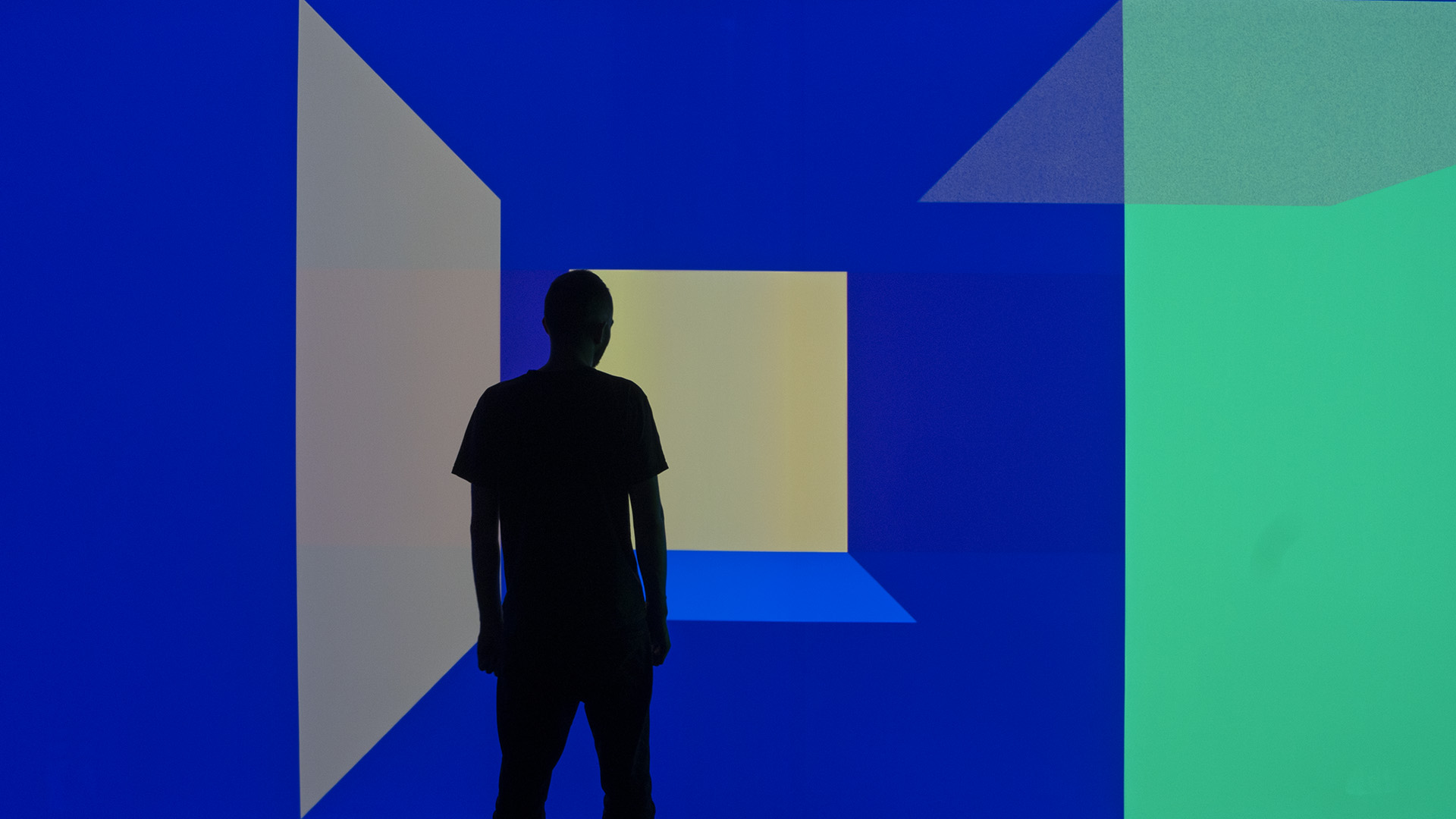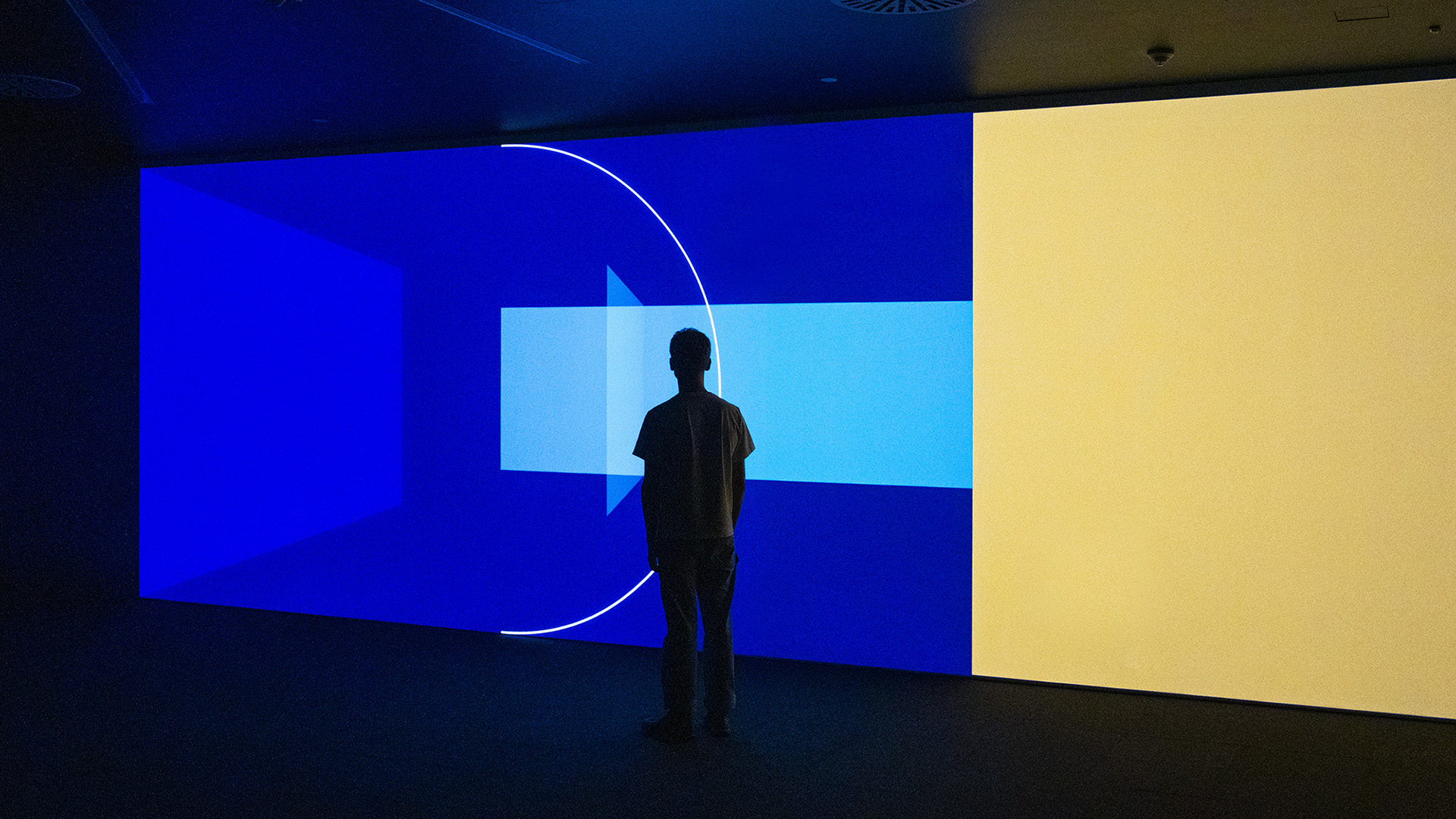Blog
An Interview With Matt Clark On “Uva: Edge Of Chaos”
29 December 2022 Thu
Merve Ünsal had an interview with the United Visual Artists founder Matt Clark on their Borusan Contemporary exhibition.
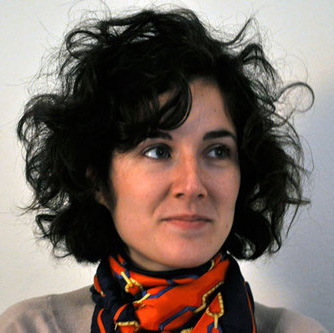
MERVE ÜNSAL
merve.unsal@gmail.com
Merve Ünsal: As a collective, you have been working with temporality and shifting perceptions of the world over the last two decades, arguably a time when these notions have been in flux more than ever before. What has this meant for your working methods and approach? How do you sustain an artistic sensibility while engaging with such rapidly changing topics?
Matt Clark: So much has changed in the last two decades, mainly due to the way we now communicate and share information. Digital technologies have turned industries upside down overnight and disrupted the world's social and political landscape in ways we were never prepared for. It's challenging to keep up with the pace of change, and it isn't easy to know what sources to trust. At the same time, the adoption of new technologies has created fertile ground for the subject matter and offers new ways for making and sharing art, so there are pros and cons to the changes we have and continue to experience.
MÜ: Your work is very research-driven and draws on a variety of disciplines. How do you translate your research into objects and experiences? How do you deal with materiality?
MC: The subjects I am drawn to tend to be things that are difficult to comprehend on simply an intellectual level; they are almost ineffable. Therefore, UVA artworks are better explored through time, where the use of light, sound, and movement unfold, and concepts manifest into something that can be comprehended.
We work with a broad palette of materials, things that are tangible and things that are not, like light and sound. The physical materials are used to make instruments or canvasses that allow us to augment space with immaterial mediums.
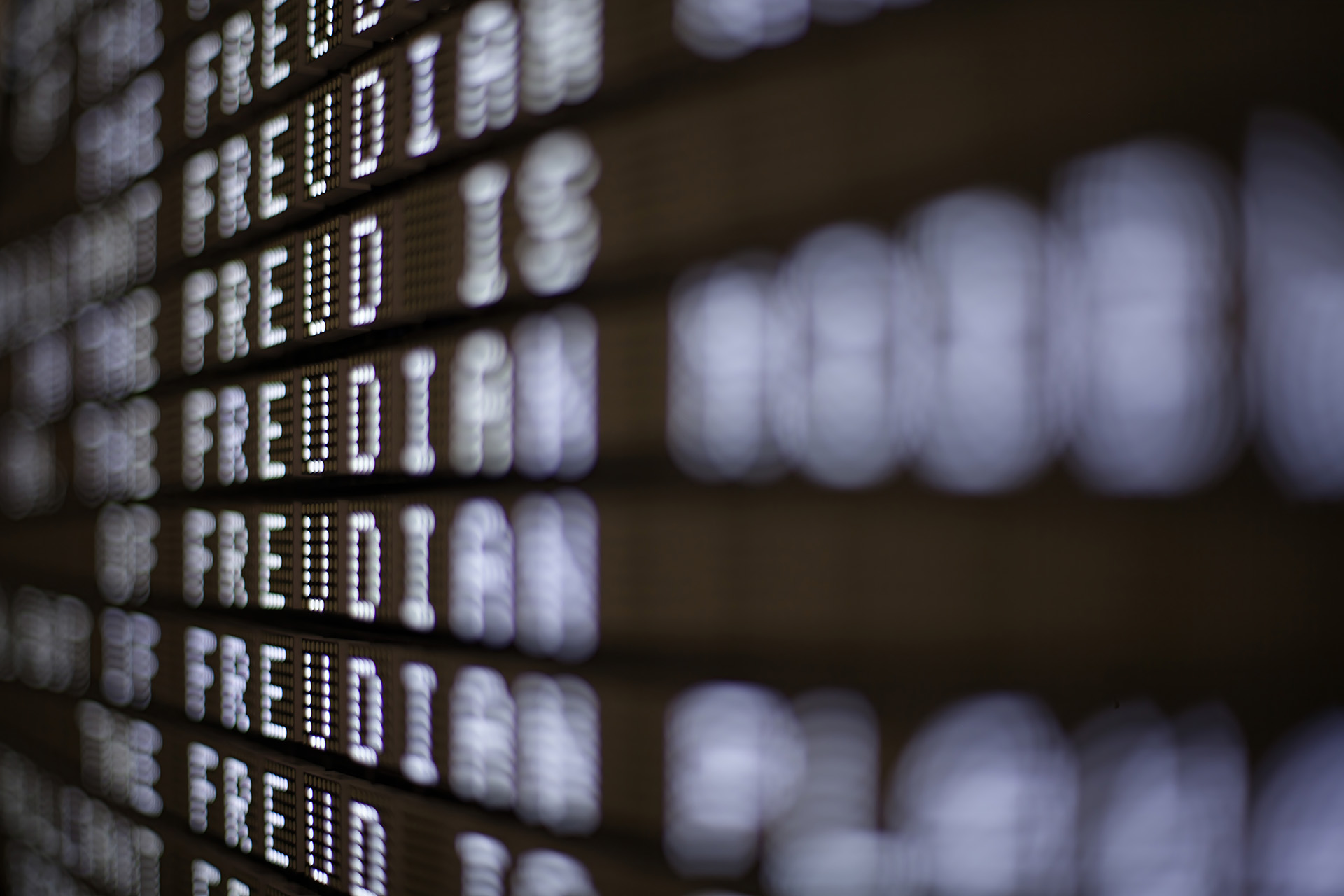
United Visual Artists, Etymologies, 2022.
MÜ: In Etymologies, you deal with the text as a form and the texts that you draw on the inability to articulate in a certain sense. Did you envision pushing the boundaries of different forms of intelligence and authorship with this work?
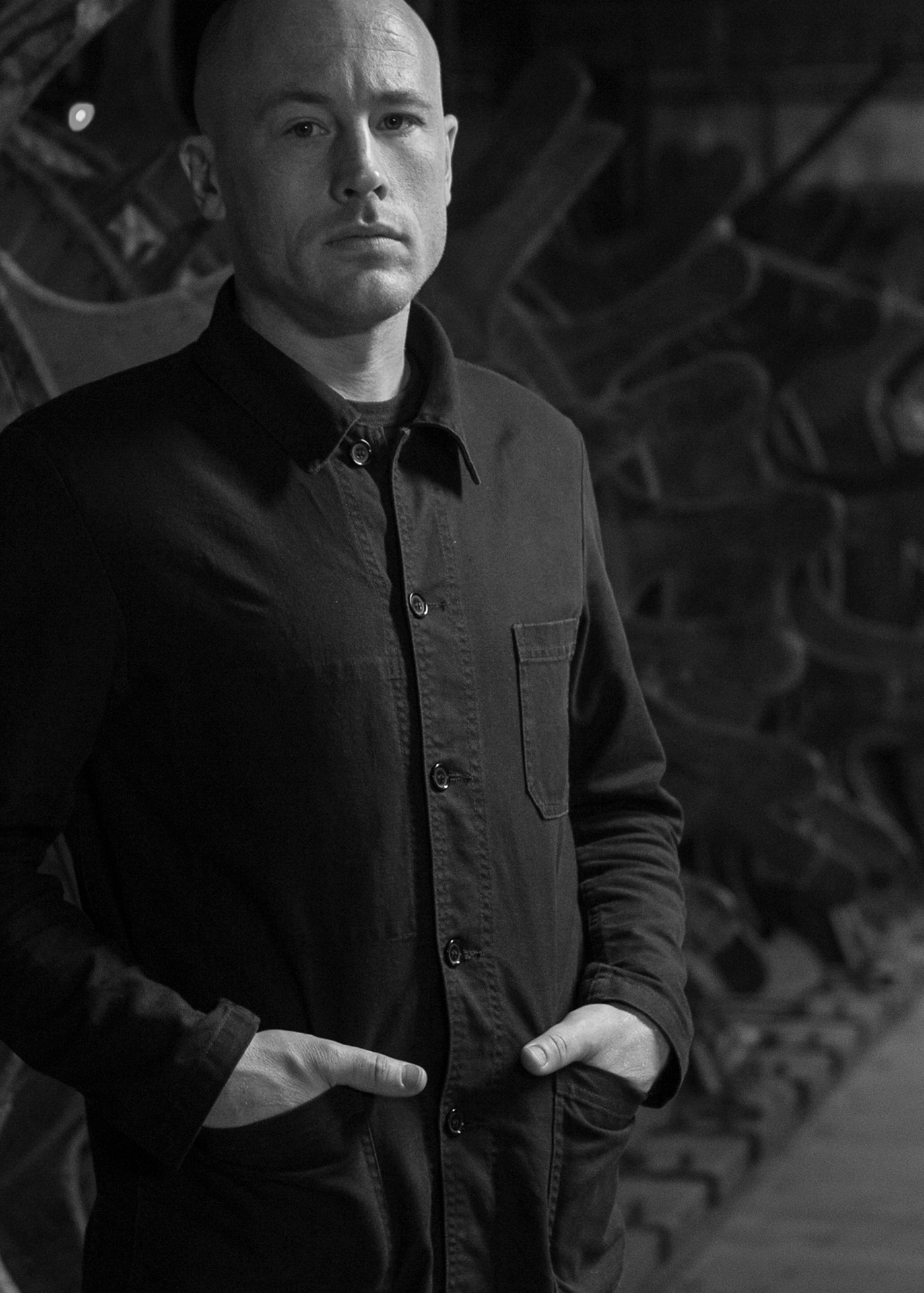
Matt Clark by Ann-Ray
MC: The Etymologies series explores how our pattern-seeking brains can't help but automatically make connections between words, even if there's no intent or meaning behind sequences. We use a computer algorithm called the Markov Chain to create the ever-changing text compositions. The Markov Chain is a mathematical system that transitions information patterns from one state to another according to specific probabilistic rules. It does not understand the meaning of words, but it can analyze and reorder them based on the patterns of repeated characters used in more extensive texts. In this latest series, we use the complete works of Sigmond Freud and Carl Jung as a “data set” upon which the algorithm draws upon. So, you get a feeling of the author's work but more often than not it is nonsensical and even makes up new words of words. Ultimately, the viewer is the author of the work as they project the meaning from the patterns, they see unfold in front of them.
MÜ: Real-time information resonates differently after the pandemic. With Present Shock, you deal with what it means to be present. How do you negotiate your presence as artists and the presence of viewers in your work, as these presences intersect and perhaps diverge from each other through form?
MC: Most of our works are created in response to living in an age of distraction. Our installation works are created with a desire to make spaces for reflection away from the distractions of everyday life. We want the audience to almost meditate on the ideas and spaces we make and be in the moment with their thoughts and feelings.
Then there are other works like Present Shock, where the intention is to overwhelm purposely. The works in the show touch on both ends of the distraction spectrum.
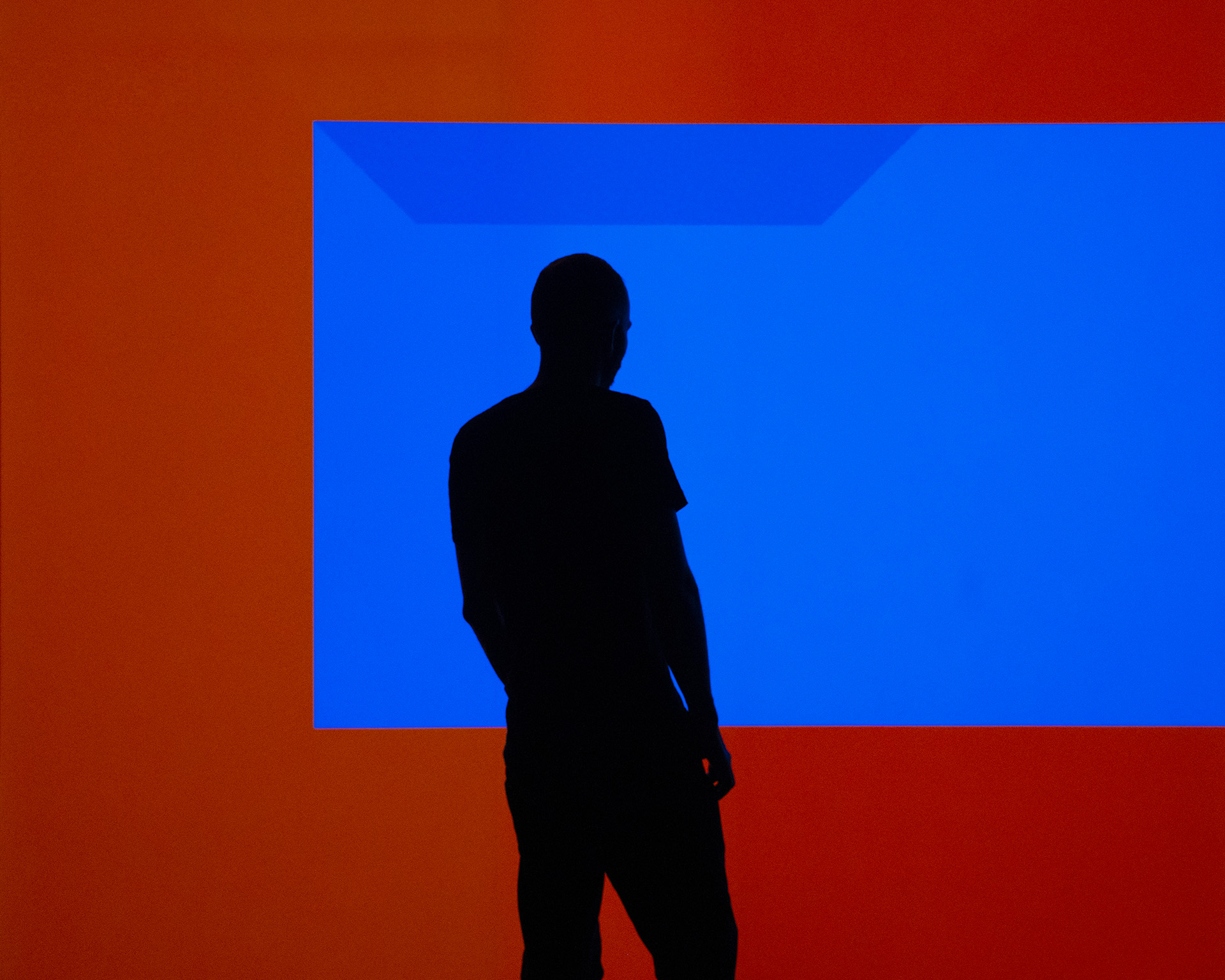
United Visual Artists, Vanishing Point 3:1 #3, 2022.
MÜ: Harmony, patterns, and other such notions that relate to the nature of aesthetics emerge in your works. I'm wondering about the relationship between the formal and the chaotic in your works. How do you work with the tensions of working with "chaotic" subject matters within the realm of the aesthetic? In other words, how do information and cognition of information inform your aesthetic choices?
MC: On the one hand, we are creating relatively rigid frameworks to work within, but there's also an element of randomness to how our works unfold dynamically. I'm interested in giving our works an agency of sorts; it usually keeps the viewer engaged for longer as humans like to work things out and understand the pattern they are observing.
There are very few things we can fully control, especially if it is something natural or biological. Conceptually, Edge of Chaos highlights this reasoning. Yes, we can influence the world around us to some degree but controlling it; that's a futile pursuit that often ends in disappointment.
ABOUT THE WRITER
Merve Ünsal is a visual artist based in Istanbul. In her work, she employs text and photography, extending both beyond their form. Ünsal is the founding editor of the artist-driven online publishing initiative m-est.org.

